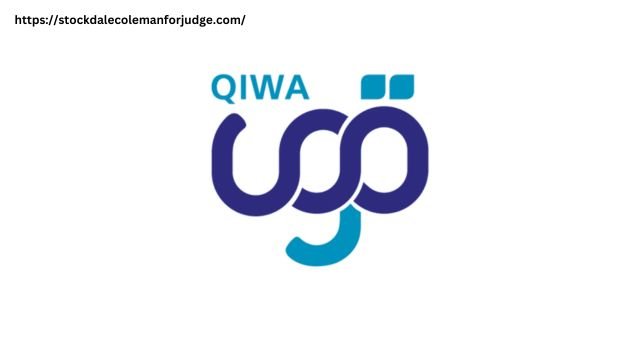chrome.//net-internals: Full Detailed & Comprehensive Guide

Introduction
chrome.//net-internals: in today’s world, technology is way more efficient and powerful. Over the last few decades, the speed of technological advancement has skyrocketed. Consequently, influencing various sectors around the world. Therefore, digitalization is getting adapted wherever it can prove to be beneficial. Evidently, a major impact of technological advancement can be noticed in the evolution of the internet. Currently, the internet has evolved into being very fast and much more reliable. Furthermore, to take advantage and make use of the internet individuals need to take help of an internet browser.(chrome.//net-internals)
An internet browser is what makes us able to access the internet. Hence, it acts like a medium. According to sources, the most popular choice and the most used browser of our time is Google Chrome. Moreover, there might be some instances while using chrome that you face some issues and want to delete/clear your browser’s cache. This blog revolves around the same topic.
Are you someone who uses the internet regularly for different purposes? Moreover, is Google Chrome your first choice when it comes to browsing the internet? And, are you on the internet looking around to find how to clear the DNS cache from the Chrome browser? If this is the case then we are pleased to tell you that you are at the right place. In this blog, we are going to tell you everything you need to know to easily clear the DNS cache from the Google Chrome browser. Whereas, we will also discuss Chrome and more stuff like flushing socket pools. While doing so, we will be very elaborate throughout the blog. For the same reason, this is going to be packed with relevant and beneficial information that will come in handy. Hence, reading this till the end is recommended.
Overview and details of Google Chrome (chrome.//net-internals)
- Name- Google Chrome (Or, just Chrome)
- Developer- Google
- Release date- 2nd September 2008
- Languages used to write code- C, C++, Assembly, HTML, Java, JavaScript and Python
- Engines- Blink, V8 JavaScript engine and Web kit for IOS
- Languages available in- total of 47 languages
- Type- web browser and mobile browser
- License- proprietary freeware (it is evidently based on open-source components
- Operating systems compatible with-
- Android Oreo or later
- ChromeOS
- iOS 15 or later
- Linux
- macOS 10.15 or later
- Windows 10 or later
Basic information about Google Chrome
Google Chrome is evidently one of the most relevant and well recognised web browsers out there. Evidently, this browser had been developed as well as published by Google. Additionally, this browser was first released to the public back in 2008. Initially, it was just launched by Microsoft Windows. Moreover, in the making of this browser free software components got used from Apple Web Kit and Mozilla Firefox. Thereafter, it got released on platforms such as Linux, macOS, IOS and Android. For Android users, Chrome is the default option for internet browsing.
Whereas, this browser is also the main element used in ChromeOS. In ChromeOS, this browser serves the purpose of being a platform for web applications. According to data from April 2024, Google Chrome holds 65 percent of worldwide browser market share. Lastly, Google is known to have used the brand name Chrome and expanded it. With services such as Chromecast, Chromebook, Chromebit, etc.(chrome.//net-internals)
Understanding DNS Cache: What is it? & what is DNS Cache flushing?
To understand DNA Cache, you basically need to know that there are various factors at play while you are browsing the internet. Basically, DNS Cache can be simply explained as a data which is about commonly used domains and websites. The main purpose of this cache can be explained as to increase browsing speed. This is in case when remote or ISP servers are not operational and down. Thereafter, those websites can be accessed by the used by simply clearing chrome DNS Cache. Also, there are some instances in which a website changes its DNS entry. Or, it gets changed even due to unreliable network conditions.
Thereafter, if the user ends up flushing out the DNS cache this issue will get resolved. Evidently, flushing out the DNS cache leads to reaching the right IP Address on the internet, DNS Cache flushing refers to deleting all the cached data and DNS entries that exist in Google. Thereafter, once all the DNS Cache is flushed Chrome will work on requesting a new IP address and DNS information of a particular website.
What is chrome.//net-internals DNS Cache?
Basically, it is a link that will redirect a user to the page which has all the DNS Cache related options and information. Furthermore, using this link users can clear the host cache leading to getting rid of DNS Cache in the browser. Evidently, the “net-internals/#dns” refers to Net-internals which is a Net log Event Stream Visualisation Tool. Using this tool real time logs can be accessed and viewed. In fact, it can even be used to load different Net log dumps of different dates. These Net log Dumps include all the browser’s network related events and systems. Lastly, these can be helpful in situations like troubleshooting and debugging problems.(chrome.//net-internals)

How to clear the DNS Cache
- You need to open your chrome browser.
- Thereafter, you need to open up the provided link. (Chrome://net-internals/#dns)
- Then, once the page gets loaded successfully you need to navigate to the option that says “Clear Host Cache” and click on it.
- After this, you won’t get any pop-up depicting status or success. Simply, you will have cleared all the cache by just clicking on it.
- Then you are required to restart your browser and open the provided link. (Chrome:net-internals/#sockets)
- Lastly, you need to click on the option saying “Flush socket pools”. After this you need to again restart the browser and you are done.
Conclusion
We told you everything about DNS Cache that you need to know along with how to clear cache. This is the end of this blog. In conclusion, we hope that we managed to provide enough information to satisfy your expectations. Lastly, we encourage you to visit our homepage and consider checking out more blogs if that was a relevant read for you.
AUTHOR- Piyush Chauhan












